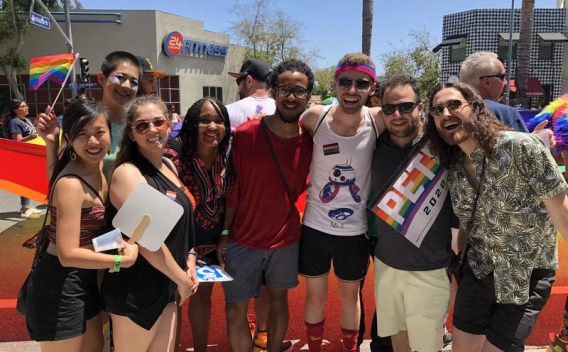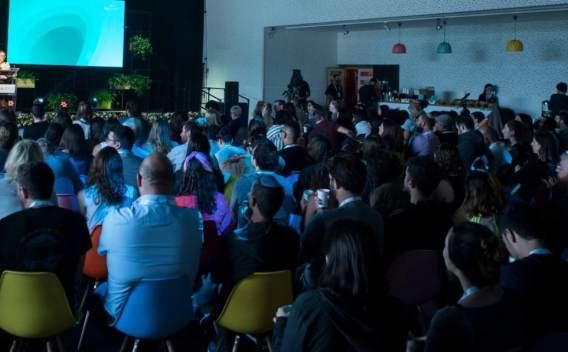By
Published
November 2, 2020
Tags
Noa is a brand marketing specialist, an expert in the Future of Work and a community builder, currently serving as head of the Israeli Delegation in Washington, D.C. Until recently, she was Head of Employer Brand and Internal Communication at eBay. Noa is co-founder of a leading job search platform in Israel, “Dana and Noa Make My Career,” a nonprofit startup that strives to democratize career opportunities. With her 10+ years of experience in the tech ecosystem, marketing and HR, Noa is a popular speaker at conferences and events. She has a Master of Liberal Arts from the Hebrew University's Interdisciplinary Honors Program, and is also a graduate of executive programs at MIT and Princeton University. You can find Noa on LinkedIn here.
Let me begin by saying: I am not a morning person. Any time before 7:00 a.m. does not exist for me, and my kids learned at a very young age that the best they can get is a nod towards the remote. At really desperate times they can have my phone.
About a year and a half ago, my youngest son woke up around six, I sleepily handed him my phone, and because most of my apps are password protected, I didn’t think too much about it. We got ready, headed out the door, and the day began. A few hours later, I started to get messages on different platforms saying that my LinkedIn account had been hacked.
Very quickly, I realized that my son had surpassed the password stage, entered my LinkedIn account, wrote a post, published it, and reached a few thousand people in just a few hours. Here is the masterpiece:

All of this is to say: Every time you find yourself wondering, “Do I have time for yet another social network?” Or, “Does my post have the right to be seen?” The answer is always YES!
If a toddler can do it, so can we!
It often seems that in order to manage quality profiles on social media you need to invest a whole lot, but the truth is that what matters most of all is consistency. It’s a bit like practicing yoga—you do your best when you practice every day. The following tips and links are here to help you give your LinkedIn profile a facelift. It takes a little bit of work, but the end result is a profile that works for you.
1. Polish your profile.
Here is a great Cheat Sheet that reviews the various sections of your profile. An excellent profile picture is a must-have. For a quality cover photo, see this website where you can find some very good free sources.
2. Write an informative headline.
Unless you actively rewrite your headline, LinkedIn will automatically populate it with your current role. Many times, this doesn’t really represent your whole personal brand or business or talents. By using one of these formulas, you can make sure to bring the full spectrum of your professional experience front and center on your profile.
3. Perfect the art of the summary.
Read 10 LinkedIn Profile Summaries That We Love (And How to Boost Your Own). This article, from LinkedIn’s own blog, is long, but provides excellent examples. Well worth your time.
4. Deftly describe your professional experience.
There is a proven formula suggested by former Google SVP of People Operations. I have talked to many recruiters and there is widespread agreement that this is the best one. The idea is not to stick to general declarations but to provide specific examples.
The formula he introduces is the following:
Accomplished [X] as measured by [Y] by doing [Z]
The article has some great examples of this formula in action.
5. Write posts with meaningful content.
Always post content that adds value. People don’t come to LinkedIn to congratulate their friends for closing an important deal or attending a conference.
You had a work meeting in Switzerland? Great. Include three interesting facts about the company you met with; three negotiation elements you like to use in work discussions that you learned from that mediation course you attended; five things you do before arriving at a meeting with investors; etc.
6. Keep it within the platform.
As with any other social media platform, LinkedIn doesn’t like to send people outside the platform. So, rather than write content in a separate blog, it would be better to copy the content and rewrite it as an article on LinkedIn.
7. Develop a routine.
Some LinkedIn articles gain huge exposure, resulting in an audience of followers, clients, etc. So it’s a good idea to develop a routine of writing on the platform. There are currently more readers than writers on LinkedIn (at least when counting quality writers), so this is the time to build a community of followers! I recommend a weekly post and a monthly article.
8. Keep comments thoughtful.
Responding to posts written by others is good, but please remember that it all comes up in your feed! If you always respond with “amazing” or “great read,” this will all show up on your feed. That’s why I recommend not to reply with empty superlatives, and instead to really respond to the person who wrote the content. For instance: “I read the article and thought that…”; or, “This personally reminds me of my own work on…”
9. Language matters.
Hebrew or English? In my personal opinion, English. Or, at least, also English. But of course, this depends on your specific content world and your wider occupation. If writing in English would prevent you from using the platform, then OK, use Hebrew, but remember that it limits your exposure. And without backing this up with data, I would add that I assume you will be seen only by a specific and narrower audience. (This tip doesn’t just go for Hebrew—it applies to writing in any language other than English.)
10. Write articles.
The exposure to articles on LinkedIn is lower and slower compared to posts, so you need to invest more effort (and patience) in promoting them. On the other hand, articles have vast advantages: they are indexed on Google and LinkedIn; they become part of your profile; their shelf life is longer; and their performance analysis (exposures, likes, etc.) is kept over time.
BONUS: Tips for Writing Articles
- Promote your article through separate posts on LinkedIn (beyond the initial post) as well as on other channels
- Include relevant search words in the title and body of the article
- Include rich media: photos, SlideShare, video, hyperlinks…
- Include tags (people, pages) and hashtags
- Invest some thought in writing the title…this is a critical component, as most people are only exposed to the title (they don’t click on it)
- Understand how LinkedIn’s algorithm works
11. Add friends.
The number of LinkedIn friends you have is important because of course, this is how your presence grows. The link I added above on LinkedIn’s algorithm explains the importance of multiple connections (especially “first circle” connections).
Sit down and make a list of the areas and people that you would like in your network. Consider also connecting with recruiting and HR personnel of companies you value or that you would like to work for one day.
The goal is definitely not to send friend requests to random people. In fact, the system will block you from sending more requests after a few dozen, or if many of your requests are not accepted. (I tried this once just to see if it works, and it does…so please don’t act like a bot!)
12. Personalize messages.
I know people who always send a “cover letter” with a friend request. Personally, when I see a long generic message I normally don’t even open it. But of course, a personal message is a different story!
Bottom line: Send a message, though not a generic one. Instead, familiarize yourself with the company so your intended recipient feels like you have written only to them, even if they are one of 30 companies you are writing to.
Here are some suggestions for opening lines you can use to begin a non-generic message.
13. Consider search words.
Since all LinkedIn profile components can be searched, search word optimization is important. Here are two helpful resources to help you get started:
- LinkedIn Optimization tool(relatively high annual payment)
- LinkedIn's explanation on how their algorithms rank profiles in their search results
14. Analyze your dashboard.
How is our profile doing? We—all of us—are our own businesses. And like any business that checks its numbers and follows up on its progress, it’s worthwhile we do the same. How should you analyze your personal dashboard? See this link for an explanation of the dashboard’s different components.
People always like to say that LinkedIn is an excellent tool for building your personal brand, which is true— but this personal brand has to be based on generating value for your followers or your professional community, rather than on self-glorification. I always say in my talks that “the art of networking” is “the art of giving,” and LinkedIn is THE network for doing this. Be kind in passing on CVs to the company you work for, in responding to content written by others, in being responsive to people asking for advice or connections. This doesn’t mean you have to respond to everyone, but even responding to some is great.
Here’s to the start of a consistent daily practice of polishing your professional profile!
ROI Community is proud to empower its members to explore their values, identity and new ways to strengthen their communities and the world. ROI encourages the expression of personal thoughts and reflections on this blog. Each post solely reflects the opinion of its author and does not necessarily represent the views of ROI Community and all of its members or the Schusterman Foundation and its portfolios and partner organizations.





